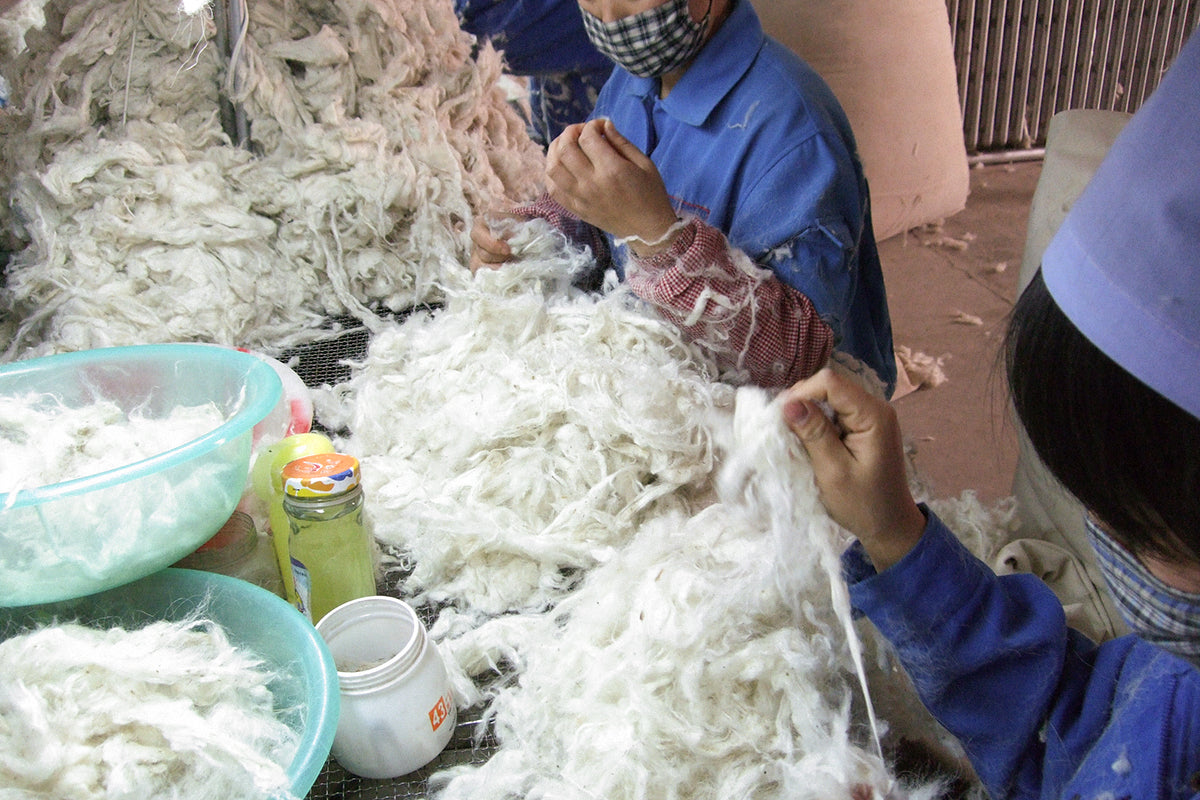Creating Cashmere Fluffy① Harvesting Cashmere Goat Hair Relief and Inspiration: Witnessing the Harmonious Relationship Between Cashmere and Humans Firsthand
Spring - The harvest season is a time of joy as the year's hard work pays off.
The body of a cashmere goat is covered with thick, stiff bristles, but nestled among these bristles grows soft, fluffy hair. This downy hair is what we use for cashmere sweaters. It's harvested in spring, around May, when the cashmere goat's coat transitions from its winter to summer hair. We use a tool akin to a rake (but without any pointed ends, of course) to meticulously collect the fluffy hairs. These hairs naturally fall out, so they are collected before this happens.

Unlike sheep's wool, cashmere goat wool can't be sheared in the same way (although some of it can be sheared nowadays). It takes about an hour to comb the wool of one cashmere goat. When I tried it myself, my arms grew tired after just five minutes. During the shearing season, the herders spend their whole day combing the downy hair, which is indeed very strenuous work. However, springtime represents a reward for the pastoralists' hard work throughout the year, bringing them the joy of the harvest season. So, despite the physical demands, they smile. As such, raising cashmere involves considerable labor, yet the amount of raw cashmere harvested from a single goat is only about 180 grams, equivalent to one "angel's stole," a cashmere item from UTO.
Recently, a majority of fashion materials such as knitwear and woven fabrics have been replaced by synthetic fibers. Cashmere, on the other hand, is an agricultural product that is harvested from livestock lovingly raised by pastoralists. These pastoralists harvest the winter hair that grows and changes during the harsh winter months. Since it can be harvested annually through breeding, cashmere is a typical agricultural and livestock product that aligns with the Sustainable Development Goals (SDGs) recommended by the United Nations. Furthermore, it's an ecological material that decomposes naturally when disposed of after use.






